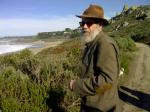Are you looking through a broken pair of eyes? Are you ill-equipped to hear me?"
"Are you one of the cogs
Too busy probing the pleasure centres of dogs to get near me?
- Kevin Godley, Lol Creme| Random Brainwave, 1979
 What happens when human curiosity is reduced to an engineering exercise?
What happens when human curiosity is reduced to an engineering exercise?Some major efficiencies happen like instant road maps and opt-in spell checkers. Who would ever want to predate a world devoid of "did you mean...?" But whether we meant to or not Google has assigned a demand-side value to the answers it provides and the way it provides them. That is a powerful and compromising brokerage.
Our passions and concerns are channeled into a need for certainty that only seems to increase with the lack of closure. We are not just hard-coded for self-containing narratives of a self-concluding nature. We will skip ahead and miss the good bits because we'll be too stressed out to appreciate them if it all turns out for naught. Such behaviors turn out well for Google. We're addicted to answers. Google is not a vehicle. It is the verb. It does not own the road. It stores the potholes below the crevices of its membranes. To deny that is to take away free advertising for a search media giant and our own self-expression in the same bated breath.
The problem is not that Google and the self-proclaimed 'beauty' of its new privacy policy is big brother in a barely disguisable ruse: "[A] simple, intuitive user experience across Google." If anything Google is big bystander. Google doesn't want to crawl inside our heads and decode our inner confessionals -- that last veil of hesitation that tells us not to visit our untested assumptions on inscrutable Google. They want to bucket our articulations: (1) First into IP addresses, and then, (2) into groupings of indulgences and shadowings of flash-points. Just the very products of our experience that cause us to take notice and give money. They don't call us users for nothing:
Google: "We never sell personal information."
Subtext: "We always sell impersonal information."
Okay, you're thinking. So I'm a consumer. They package me up and send me off as a nameless aggregate into the awaiting clutches of their material witnesses: The Procters and Gambles, the seasonal influenza indices, the local pizzerias ... all riding on the outcome of my reflexive back and forth with Google. I got my toppings, and my meds, and my brand name discount. Just pay the man and move on, right?
Less Why for the Ware
The problem is not spyware but literally why-ware -- the analytical nature of motivation. These are temperments, not transactions. These are the understandings reached through interconnecting events, inwardly wired impulses, and group + personal dynamics that factor into our actions and rationale for the outcomes they deliver. There is no GPS on God's green Google Earth that reconciles these complexities with our circumstances, decisions, and their consequences.
Google would be the first search media giant to tell you they are not in the business of telling us what to do. But what they trademark behind that steel trap of engineers and lawyers is the newly franchisable power of suggestion. That means that a post millennial tween who straps on her Google glasses will be free to experience that mediated tunnel of contraption-induced toolbars and pulldown menus that jog along-side the shoulders of these driverless thoroughfares. She will have no need for prior knowledge or personal experience or the need to remember her impressions or with whom she chooses to share them. As the latest FAQ on Google's new privacy policy intones:
Google: "We can treat you as a single user across all our products."
Yes, that is intended to be a consoling message to us memory-challenged users. Perhaps the real threat would have been to caveat that emptor:
Subtext: "We can treat you as a multiple product across all our customer segments."
Birth of a Pathology
The biggest eyebrow raising to date is that Google's bid at reality augmentation is what stoners in the seventies used to say about their sober counterparts:
1975: "Reality is for people who can't face drugs."
2015: "Hiding publicly behind an interface is like viewing the world through Google-colored glasses."
Us ivory-towered elites can't have that. We retreat to our own 20th century safety zones. We condemn this intervention! It is a container devoid of serendipitous discovery! It is way too interesting for our kids to tune us back in again. We are so gone.
It is also the shortest distance between points she'll no longer be capable of making -- mostly why did she climb in her Google car and where did it drop her? That's assuming the passenger will have the curbside capacity to reboot the override.
Will they resume the itinerary on the driver's side? That's assuming they can drive a manual as well as read one. That's insinuating she can trick the Google car into telling her what she need to know and not what the car is programmed to disclose. That will be a hard truth from our user and a soft landing disclosed by Google. That's assuming one can take this all in. They seem to be talking over one another.
And down will come civilization, cradle and all.




